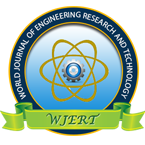| All | Since 2020 | |
| Citation | 172 | 110 |
| h-index | 7 | 5 |
| i10-index | 1 | 0 |
WJERT Citation 
Login
News & Updation
Abstract
THE RISE OF LOW-SPEED AUTOMATED VEHICLES: A TRANSPORTATION REVOLUTION
Revansidha Chabukswar*
ABSTRACT
Over the past decade, there has been substantial progress in the development of automated driving technologies. Although conventional vehicles and services have received considerable attention, automated driving technologies also present opportunities for nontraditional vehicle types and use cases. Several manufacturers have focused on developing a new category of vehicles called low-speed automated shuttles. In today's world, autonomous technology has experienced continuous growth, as companies prepare for the future. In the context of global suburbanization and an aging population, low-speed autonomous vehicle systems are being developed to provide transportation services within urban areas. Companies are working to enhance the navigation capabilities of these vehicles to navigate the complex scenarios of inner-city environments, facilitating the movement of people within urban settings. This paper further explores the development of autonomous technology and its benefits for the future. It also examines how companies are working to transform today's transportation system through autonomous navigation. The analysis delves into the driving forces behind this innovative technology and the advantages of autonomous transportation. Additionally, the paper defines the design and characteristics of low-speed autonomous vehicles, discusses the major players and their motivations, and outlines the deployment strategy. It also considers the common challenges and provides suggestions for mitigating them.
[Full Text Article] [Download Certificate]
